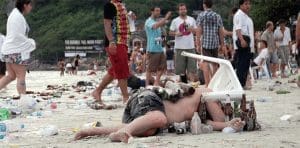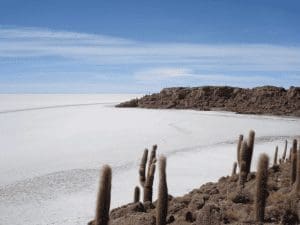2014 is almost over, and in this era of low cost flights, it has become easier and easier to travel and to reach almost every corner of the world.
But do we really understand what being a traveller means? Aside from collecting experiences and memories it certainly means having a lot of responsibilities.
Gringo Trails, the first feature-length documentary film shot by anthropologist Pegi Vail, offers much food for thought, taking on themes that make us reflect on how much we alter the places we visit.
Combining interviews with writers and experts, personal experiences of both travellers and natives with the images of places’ change over two decades, Gringo Trails is definitely a must see for all of us who like to call themselves travellers.
Taking us on a journey between South America, Asia and Africa this film makes us reflect on how much we actually affect the cultures we encounter and the nature we walk through, and most of the time the answer is pretty scary.
Massive, uncontrolled, uneducated 
The craziest example shown in the documentary of how massive, uncontrolled, uneducated tourism can completely upset an environment is the beach of Haad Rin in Thailand. First discovered by a few backpackers back in the eighties, the beach quickly became one of the most popular stages for crazy partying, attracting crowds from all around the world. The Full Moon party, celebrated every month, attracts thousands of people, which means lots of garbage being left on the beach and in the sea by partygoers. The seaside is completely altered from what it was just twenty years ago, maybe changed forever.
This is possibly one of the worst results of mass tourism and I would say that it probably made most of us viewers think that maybe sometimes even we, in our small way, have left a trail behind us during our travels.
Gringo Trails focuses mostly on the take that tourism and globalisation have on exotic places but the problems it shows can be easily applied to nearer destinations, maybe even to the city we live in.
Tourism, in fact, has many positive sides, and it’s certainly good for the economy. But, as often happens, money doesn’t bring happiness and money is not always good. As Lonely Planet travel writer Anja Mutic says, when such exotic and rich locations experience the boom of tourism, that boom “can make it or break it”.
 In a search for authenticity
In a search for authenticity
In our search for authenticity we risk ruining, if not completely destroying, the authenticity we’re looking for.
Gringo Trails shows many sad and worrying examples, but its purpose is positive and hopeful, showing us how such tourism can be sustainable, like in Bolivia’s Madidi National Park or Buthan, where tourists have to pay a daily tax to visit the country.
We, as reborn conscious travellers, have to take a step back, leaving behind our self-centred concept of what travelling means, and start thinking about how our presence affects the people, the culture, and the environment we are visiting. We should try not to leave huge footprints behind us, but to experience and walk through this beautiful world with love and care.
For more information visit the official website.
Gringo Trails will be screening at Kino Central Mitte, Berlin, until December 10.
Check out the programme here.
Article by Valentina Bronzini


